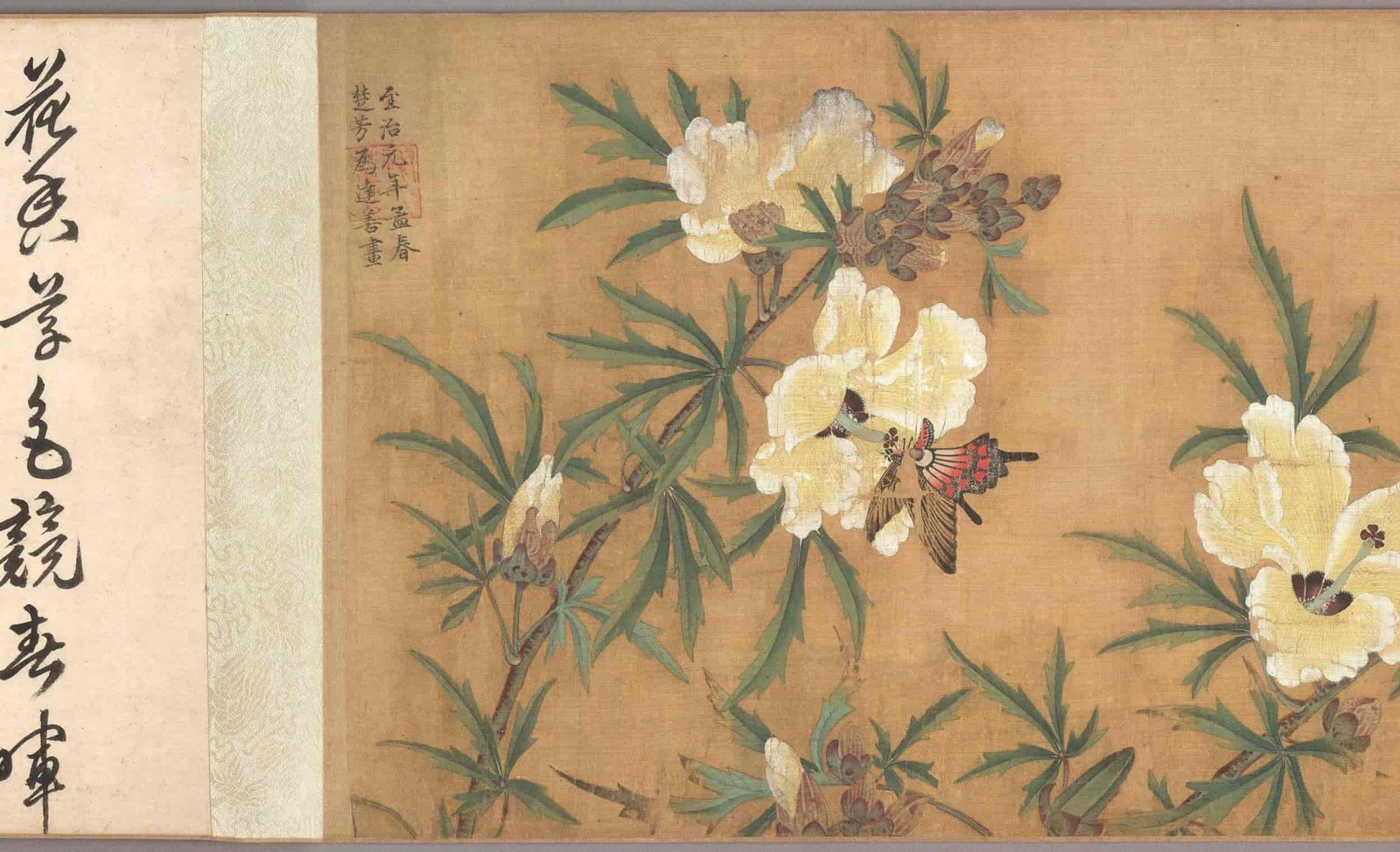Xie Chufang’s Qiankun Shengyi Tu (《乾坤生意图》, The Vitality of Nature Scroll)
A masterpiece of Yuan Dynasty (1271–1368) meticulous brushwork, Qiankun Shengyi Tu by Xie Chufang (谢楚芳, fl. early 14th c.) captures the brutal yet poetic struggle for survival in the natural world. Painted in 1321 during a politically turbulent era, this ink-and-colors-on-silk handscroll (27.8 cm × 352.9 cm) is now a crown jewel of the British Museum, listed among its “Top 10 Most Precious Chinese Artifacts”.
Structure and Symbolism
The scroll unfolds in six scenes, each blending vibrant flora with predator-prey dynamics:
- Plantain and Carnage: A dragonfly collides mid-air with a fly, while ants dismember a butterfly beneath a plantain leaf. A concealed toad watches, poised to strike.
- Rapeseed Ambush: A lizard lurks among rapeseed leaves, targeting a grasshopper, as a snail climbs silently and butterflies flutter obliviously.
- Willow Treachery: A mantis seizes a cicada on a willow branch, unaware of a tree frog stalking nearby—a visual nod to the proverb “The mantis stalks the cicada, unaware of the oriole behind”.
- Bamboo Battleground: Wasps attack a damselfly near a bamboo honeycomb, while a red dragonfly observes stoically.
- Cockscomb Romance: A male katydid feeds on cockscomb leaves as a female descends toward him, framed by fluttering swallowtail butterflies.
- Harmony in Hibiscus: Bees and butterflies pollinate yellow hibiscus, offering a rare moment of tranquility amid the carnage.
Artistic Mastery and Historical Context
- Scientific Precision: Xie’s hyper-detailed depictions of insects—from the veined wings of dragonflies to the segmented legs of mantises—reflect Yuan-era advancements in naturalistic observation, surpassing even Song Dynasty precedents.
- Political Allegory: Created during the chaotic reign of Emperor Yingzong (r. 1320–1323), the scroll’s predation motifs metaphorically critique Mongol rule and societal greed. Later inscriptions by scholars like Chen Shen lament human folly: “Insects scheme for food—is man any different?”.
- Provenance: Sealed by British collector William Butler in 1797, it likely reached Europe via East India Company trade or as a diplomatic gift. Acquired by the British Museum in 1998, it remains the earliest dated Chinese painting in UK collections.
Inscriptions and Legacy
Five poetic colophons deepen the scroll’s philosophical resonance:
- Songhua Daoren: “Flowers and insects vie for spring’s glow—who knows Heaven’s intent?”.
- Chen Shen: Condemns human greed, comparing it to insect predation.
- Yuan Cheng: Praises the cicada’s purity and warns against arrogance.
A fusion of Daoist cosmology and political satire, Qiankun Shengyi Tu transcends mere naturalism, offering a mirror to Yuan society’s turmoil. Its survival and global acclaim cement Xie Chufang’s legacy as an unheralded genius of ecological storytelling.
For digitized details, explore the British Museum’s online archives.


评价
目前还没有评价